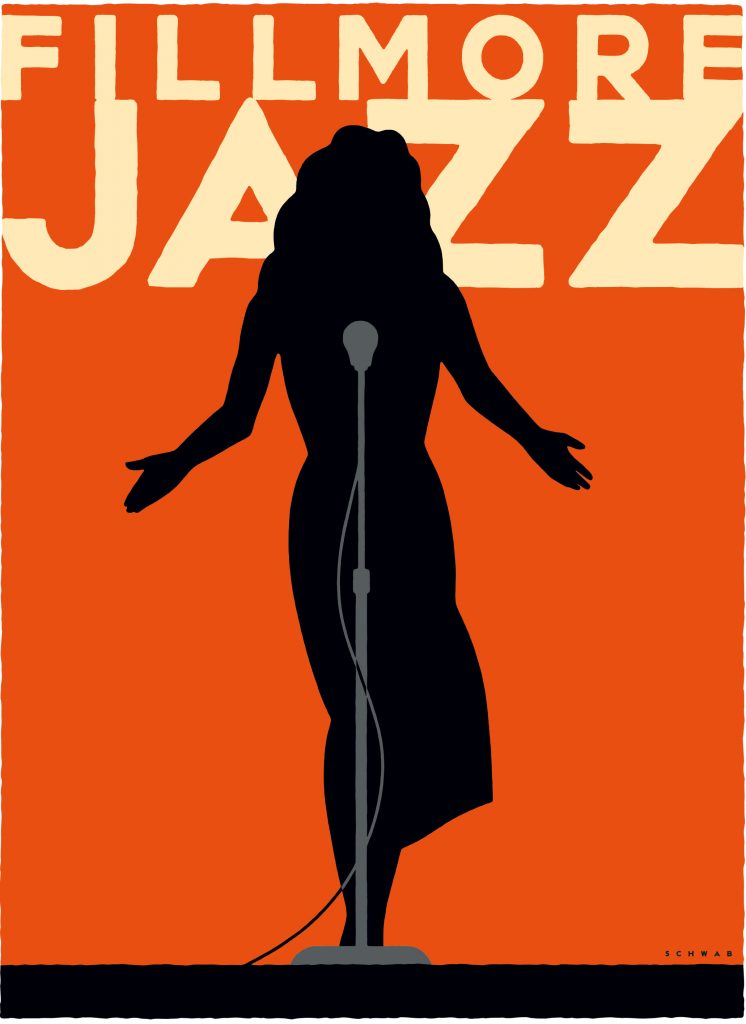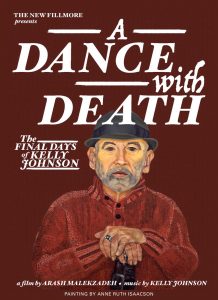By MARIAN HALLEY
Nearly a century before Rosa Parks, neighborhood resident Mary Ellen Pleasant sued a local transportation company for not letting her and other African Americans ride. And she won.
Many details of Pleasant’s legendary life are open to question, but what is certain — and recorded in a plaque at the corner of Octavia and Bush Streets — is that she was a tireless worker for civil rights and a great entrepreneur.
The Mary Ellen Pleasant Memorial Park, the smallest park in San Francisco, consists of that plaque and six enormous eucalyptus trees that march down Octavia. The site was chosen because Pleasant’s property once occupied all of Octavia Street from Bush to Sutter and included a 30-room mansion and separate stables. It burned down in 1925 and was replaced two years later by Green’s Eye Hospital, which is still there and now known as the Healing Arts Building.
Pleasant was probably born in 1814 in Georgia into slavery, but was bought and freed by someone who recognized her intelligence and talents. She was later an indentured servant in Rhode Island, where she married an abolitionist who worked as a carpenter.
In 1852, Pleasant came to San Francisco, fleeing prosecution under the Fugitive Slave Act for her work leading people from slavery to freedom. She continued that work in California, sheltering people who escaped slavery and finding employment for them. She met at least once with abolitionist John Brown and gave him money to help with the cause. In accordance with her wishes, her tombstone, in Napa, states: “She was a Friend of John Brown.”
Pleasant arrived in San Francisco with a considerable sum of money left to her by her first husband. She invested it wisely: Her businesses here included laundries, dairies and exclusive restaurants — all of which were quite lucrative in a city filled with miners and single businessmen. In the 1890 census she listed her occupation as “capitalist.”
She had been a capitalist from the day she arrived here. According to an article in the May 7, 1899, San Francisco Call, on the day she landed wealthy bachelors came to the waterfront to engage Pleasant as a cook, her reputation for cooking having preceded her. The bidding went high. Then Pleasant added conditions, such as no dishwashing. When the highest bidder accepted her conditions, she changed her mind. The next day, she announced that she would open her own restaurant.
Her restaurant attracted prominent men such as Darius Mills, William Ralston and William Sharon — men who made their fortunes in the Comstock lode and who later founded the Bank of California. The young women who worked in the restaurant were told to listen to the dinner conversation and report back the financial gossip of the makers and shakers. Pleasant put the information to use in her own financial investments.
While in San Francisco, she married James Plaisance, with whom she had a daughter. Her family relations were not good; she changed her name and had little contact with her daughter. The great love of her life was Thomas Bell, a Caucasian she met on the ship to San Francisco and who became her business partner and almost certainly her lover. Since her gender and race precluded her from engaging in financial affairs, she made her investments through Bell. Their joint fortune reportedly reached $30 million.
Her 30-room Octavia Street Italianate mansion, which she designed, built and furnished, became known as the Thomas Bell mansion. When she moved in, Bell did too, along with a Caucasian wife Pleasant more or less found for him. Because of this living arrangement, and because of rumors about events and underground passages at the house, it also became known as the “House of Mystery.”
Probably out of envy and anger at the enormous success of a black woman, rumors abounded about Pleasant’s manner of making money. For the same reasons, she was referred to as “Mammy” Pleasant, a name that persists in accounts to this day. She detested the insulting nickname, and returned envelopes addressed that way unopened. And when Thomas Bell died after falling down a flight of stairs, rumors suggested that she was responsible — even after the coroner’s jury found that the death was accidental.
When Pleasant left her house in 1899, following a loud argument with Bell’s widow, the event was the subject of a long article in the Call reviewing her life. According to the article, “her connection with the ‘underground railway’ was an established fact and planters whose slaves she had helped cross the border to the free North demanded her life as a recompense.”
Mary Ellen Pleasant died in 1904, apparently penniless. She is a colorful figure in San Francisco history, but any two accounts of her life contain contradictory facts, and most include racist statements. She has made appearances in recent novels, including “Earthquake Weather,” by Tim Powers (1998) and “The Confessions of Max Tivoli,” by Andrew Sean Greer (2004). The most authoritative accounts of her life are by Susheel Bibbs and include a documentary film, “Meet Mary Pleasant, Mother of Civil Rights in California.”
Her legend lives on
Mary Ellen Pleasant’s spirit continues to resurface around the city.
• Pleasant made an appearance at the California Supreme Court in a summer 2010 exhibition in the Archive Room on the main floor of the court’s home at 350 McAllister Street. She is featured in an installment on the state’s early legal history titled “Civil and Uncivil: Constitutional Rights in California.” Her place in legal history was secured when a streetcar conductor in North Beach refused to stop and allow her to board. When a passenger urged him to stop, the conductor replied: “We don’t take colored people in the cars.” Pleasant sued, blazing a trail for civil rights in the state — and earning her another moniker as the “mother of civil rights in California.” She won, but the California Supreme Court overturned the judgment in her favor in 1868. Nonetheless, her case was the impetus for a statute passed in 1893 prohibiting segregation and exclusion on streetcars.
• Pleasant also appears in a mural in the lobby of the Monadnock Building at 685 Market Street. She is depicted in profile in the shadows of a mural titled “San Francisco Renaissance” with other local icons and rabble-rousers. Pleasant (in black) is among the notable San Franciscans included in a mural created by neighborhood artists Mark Evans and Charlie Brown. Others (from left) are politician Harvey Milk, actress Lotta Crabtree, architect Bernard Maybeck and dancer Isadora Duncan.
• And Pleasant is the main attraction in the San Francisco Ghost Hunt, a three-hour walking tour that promises to unveil the city’s “most notorious historic haunted places” and introduce “real ghosts from wild and romantic times gone by.” The tour begins nightly, except on Tuesdays, at 7 p.m. at the Queen Anne Hotel at 1590 Sutter, just across the street from the park in her honor at Octavia and Bush, where Pleasant’s spirit is said to endure.
Organizers of the Ghost Hunt warn: “People who say bad things about her in the park have had objects dropped on their head, or fallen suddenly as if pushed. The sudden appearance of a crow seems to herald Mary’s presence, and she has even taken her human form and walked among the trees and bushes. If you make a respectful request of the voodoo priestess on that corner, and find favor with Mary, it is said that your request will come true.”









